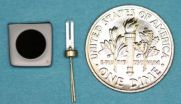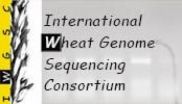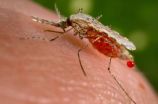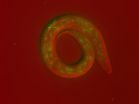(Press-News.org) Nearly all electronics require devices called oscillators that create precise frequencies—frequencies used to keep time in wristwatches or to transmit reliable signals to radios. For nearly 100 years, these oscillators have relied upon quartz crystals to provide a frequency reference, much like a tuning fork is used as a reference to tune a piano. However, future high-end navigation systems, radar systems, and even possibly tomorrow's consumer electronics will require references beyond the performance of quartz.
Now, researchers in the laboratory of Kerry Vahala, the Ted and Ginger Jenkins Professor of Information Science and Technology and Applied Physics at Caltech, have developed a method to stabilize microwave signals in the range of gigahertz, or billions of cycles per second—using a pair of laser beams as the reference, in lieu of a crystal.
Quartz crystals "tune" oscillators by vibrating at relatively low frequencies—those that fall at or below the range of megahertz, or millions of cycles per second, like radio waves. However, quartz crystals are so good at tuning these low frequencies that years ago, researchers were able to apply a technique called electrical frequency division that could convert higher-frequency microwave signals into lower-frequency signals, and then stabilize these with quartz.
The new technique, which Vahala and his colleagues have dubbed electro-optical frequency division, builds off of the method of optical frequency division, developed at the National Institute of Standards and Technology more than a decade ago. "Our new method reverses the architecture used in standard crystal-stabilized microwave oscillators—the 'quartz' reference is replaced by optical signals much higher in frequency than the microwave signal to be stabilized," Vahala says.
Jiang Li—a Kavli Nanoscience Institute postdoctoral scholar at Caltech and one of two lead authors on the paper, along with graduate student Xu Yi—likens the method to a gear chain on a bicycle that translates pedaling motion from a small, fast-moving gear into the motion of a much larger wheel. "Electrical frequency dividers used widely in electronics can work at frequencies no higher than 50 to 100 GHz. Our new architecture is a hybrid electro-optical 'gear chain' that stabilizes a common microwave electrical oscillator with optical references at much higher frequencies in the range of terahertz or trillions of cycles per second," Li says.
The optical reference used by the researchers is a laser that, to the naked eye, looks like a tiny disk. At only 6 mm in diameter, the device is very small, making it particularly useful in compact photonics devices—electronic-like devices powered by photons instead of electrons, says Scott Diddams, physicist and project leader at the National Institute of Standards and Technology and a coauthor on the study.
"There are always tradeoffs between the highest performance, the smallest size, and the best ease of integration. But even in this first demonstration, these optical oscillators have many advantages; they are on par with, and in some cases even better than, what is available with widespread electronic technology," Vahala says.
INFORMATION:
The new technique is described in a paper that will be published in the journal Science on July 18. Other authors on this paper include Hansuek Lee, who is a visiting associate at Caltech. The work was sponsored by the DARPA's ORCHID and PULSE programs; the Caltech Institute for Quantum Information and Matter (IQIM), an NSF Physics Frontiers Center with support of the Gordon and Betty Moore Foundation; and the Caltech Kavli NanoScience Institute.
Future electronics may depend on lasers, not quartz
2014-07-17
ELSE PRESS RELEASES FROM THIS DATE:
Exploiting gastric vulnerability
2014-07-17
Helicobacter pylori infection promotes stomach ulcers and cancer. How H. pylori initially interacts with and irritates gastric tissue is not well understood. An article published on July 17th in PLOS Pathogens now describes that H. pylori rapidly identifies and colonizes sites of minor injuries in the stomach, almost immediately interferes with healing at those injury sites, and so promotes sustained gastric damage.
Smoking, alcohol, excessive salt intake, and non-steroidal anti-inflammatory drugs cause damage to the tissue lining the stomach, and are associated with ...
Genetic blueprint of bread wheat genome unveiled
2014-07-17
This news release is available in French, Japanese, and German.
The genetic blueprint is an invaluable resource to plant science researchers and breeders. For the first time, they have at their disposal a set of tools enabling them to rapidly locate specific genes on individual wheat chromosomes throughout the genome. Jorge Dubcovsky, Professor at the University of California Davis, USA, says that these results "have been a fantastic resource for our laboratory. The development of genome specific primers, which used to take several weeks of work, can now be done ...
New study shows how existing cropland could feed billions more
2014-07-17
MINNEAPOLIS / ST. PAUL (July 18, 2014) Feeding a growing human population without increasing stresses on Earth's strained land and water resources may seem like an impossible challenge. But according to a new report by researchers at the University of Minnesota's Institute on the Environment, focusing efforts to improve food systems on a few specific regions, crops and actions could make it possible to both meet the basic needs of 3 billion more people and decrease agriculture's environmental footprint.
The report, published today in Science, focuses on 17 key crops ...
New potential way to control spread of insect-borne disease
2014-07-17
A cross-disciplinary team is calling for public discussion about a potential new way to solve longstanding global ecological problems by using an emerging technology called "gene drives." The advance could potentially lead to powerful new ways of combating malaria and other insect-borne diseases, controlling invasive species and promoting sustainable agriculture.
Representing the Wyss Institute for Biologically Inspired Engineering at Harvard University, Harvard Medical School, Harvard School of Public Health, the Massachusetts Institute of Technology (MIT), Boston University, ...
In development, it's all about the timing
2014-07-17
Cold Spring Harbor, NY – Closely related organisms share most of their genes, but these similarities belie major differences in behavior, intelligence, and physical appearance. For example, we share nearly 99% of our genes with chimps, our closest relatives on the great "tree of life." Still, the differences between the two species are unmistakable. If not just genes, what else accounts for the disparities? Scientists are beginning to appreciate that the timing of the events that happen during development plays a decisive role in defining an organism, which may help to ...
Viral relics show cancer's 'footprint' on our evolution
2014-07-17
Viral relics show cancer’s ‘footprint’ on our evolution Cancer has left its ‘footprint’ on our evolution, according to a study which examined how the relics of ancient viruses are preserved in the genomes of 38 mammal species.
Viral relics are evidence of the ancient battles our genes have fought against infection. Occasionally the retroviruses that infect an animal get incorporated into that animal’s genome and sometimes these relics get passed down from generation to generation – termed ‘endogenous retroviruses’ (ERVs). Because ERVs may be copied to other parts of the ...
When is a molecule a molecule?
2014-07-17
Using ultra-short X-ray flashes, an international team of researchers watched electrons jumping between the fragments of exploding molecules. The study reveals up to what distance a charge transfer between the two molecular fragments can occur, marking the limit of the molecular regime. The technique used can show the dynamics of charge transfer in a wide range of molecular systems, as the scientists around Dr. Benjamin Erk and Dr. Daniel Rolles of DESY and Professor Artem Rudenko of Kansas State University report in the scientific journal Science. Such mechanisms play ...
Pitt-led study suggests cystic fibrosis is 2 diseases, 1 doesn't affect lungs
2014-07-17
PITTSBURGH, July 17, 2014 – Cystic fibrosis (CF) could be considered two diseases, one that affects multiple organs including the lungs, and one that doesn't affect the lungs at all, according to a multicenter team led by researchers at the University of Pittsburgh School of Medicine. The research, published online today in PLOS Genetics, showed that nine variants in the gene associated with cystic fibrosis can lead to pancreatitis, sinusitis and male infertility, but leave the lungs unharmed.
People with CF inherit from each parent a severely mutated copy of a gene ...
Scientists find protein-building enzymes have metamorphosed & evolved new functions
2014-07-17
LA JOLLA, CA AND JUPITER, FL—Scientists at The Scripps Research Institute (TSRI) and Hong Kong University of Science and Technology (HKUST) and their collaborators have found that ancient enzymes, known for their fundamental role in translating genetic information into proteins, evolved myriad other functions in humans. The surprising discovery highlights an intriguing oddity of protein evolution as well as a potentially valuable new class of therapeutic proteins and therapeutic targets.
"These new protein variants represent a previously unrecognized layer of biology—the ...
A new stable and cost-cutting type of perovskite solar cell
2014-07-17
Perovskite solar cells show tremendous promise in propelling solar power into the marketplace. The cells use a hole-transportation layer, which promotes the efficient movement of electrical current after exposure to sunlight. However, manufacturing the hole-transportation organic materials is very costly and lack long term stability. Publishing in Science, a team of scientists in China, led by Professor Hongwei Han in cooperation with Professor Michael Grätzel at EPFL, have developed a perovskite solar cell that does not use a hole-transporting layer, with 12.8% conversion ...



